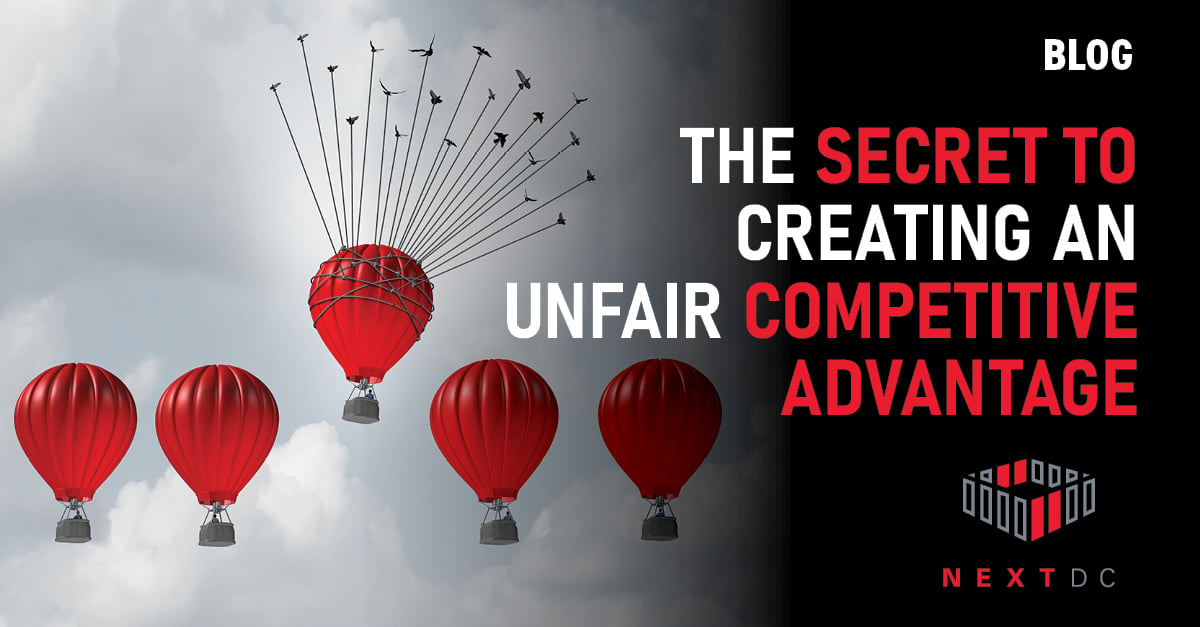Reining Sustainability in the AI Era: The Hidden Cost Blindspot CIOs Can’t Afford to Miss
For CIOs, sustainability is no longer a soft commitment. It’s a hard business risk. AI factories hosting next generation GPUs at scale consume energy and resources at unprecedented scale, and the pressure is mounting from every direction. Energy costs can be volatile, ESG commitments demand credible proof of progress, and regulators are tightening requirements for carbon, water, and waste reporting. The pain point is clear: how do you roll out AI and HPC at scale while keeping costs under control? And, how do you reassure stakeholders that growth is truly sustainable?
According to Deloitte’s 2025 C-Suite Sustainability Report (see Deloitte Global), sustainability now ranks as a “top-three priority on the C-suite agenda, alongside technology adoption and artificial intelligence (AI).” With revenue generation cited as the most frequent business benefit of sustainability investments, the message is clear: in the AI era, clients can no longer view infrastructure growth without energy and emissions accountability. Sustainable operations are integral to AI performance, cost-control and trust.
Meanwhile, ADAPT’s 2025 research shows that CIOs are increasingly expected to deliver measurable business value from digital infrastructure and sustainability initiatives, signalling that carbon-neutral data-centre strategy is transitioning from a compliance checkbox to a board-level accountability metric. CIOs are being asked to deliver digital acceleration and ESG accountability in parallel.
Energy efficiency as a board KPI
As IT scales, energy efficiency has shifted from a technical metric to a board-level issue. Performance per watt is now the benchmark for whether an AI factory is delivering responsibly.
The global colocation average PUE sits around 1.7, but leading facilities now consistently achieve closer to 1.4. In Australia, the NABERS 2025 Energy Ratings Update confirms that from mid-2025, government workloads will require a 5-star rating or a minimum PUE of 1.4.
Facilities that fall short of this benchmark won’t qualify for contracts which means, for CIOs, data centre partner selection is no longer just about uptime, ecosystem depth, or density. They are all critical conversations, but today, provable energy efficiency is a non-negotiable standard. Verifiable efficiency that can withstand board and regulatory scrutiny has become a baseline requirement and a critical lever in containing AI project costs.
Cooling for high-density AI
As racks scale from 20kW to 600kW and beyond, cooling becomes one of sustainability’s hardest challenges. Air cooling alone is no longer sufficient. Without liquid or hybrid cooling, operators face higher power bills, escalating emissions, and increased regulatory pressure.
JLL’s 2025 Global Data Centre Outlook notes that cooling already accounts for 40% of operational energy demand in AI-ready facilities, with water use per megawatt forecast to double by 2027 if hybrid systems aren’t adopted. For CIOs, this is more than an engineering issue. It directly affects operational certainty, the ability to meet ESG goals, and the long-term viability of their AI programs.
Water and waste accountability
Data centre sustainability now extends well beyond energy. In Australia, data-centre proposals totalling nearly 20 GL of potable water usage — equivalent to servicing 330 000 residents — have triggered calls for mandatory water-efficiency standards for data centres (ABC). Meanwhile, Water Stewardship Australia warns that water is ‘the missing link in data-centre resilience’ and that operators must now manage water risk as logically as energy risk (waterstewardship.org.au). In this context, choosing an infrastructure partner means ensuring not only high-density, high-performance compute, but also water-efficient, future-proof design that delivers operational certainty, future readiness and strategic advantage.
Waste is another rising concern. As infrastructure refresh cycles accelerate to support generative AI, e-waste has become a mounting concern. Research highlighted by NCS Global in 2025 (Reducing E-Waste in Data Centers: Sustainable IT Disposal Strategies - NCS Global ) points to a Nature Computational Science study estimating that, between 2020 and 2030, the rapid growth of AI workloads could generate 1.2 to 5 million tonnes of electronic waste worldwide. This underscores the need for data-centre partners who can demonstrate transparent, ethical approaches to hardware lifecycle management — ensuring equipment is reused, recycled or retired responsibly to meet tightening sustainability and governance expectations.
Independent certifications such as TRUE waste management, which validates landfill diversion, are becoming the standard. Leading facilities are already achieving diversion rates above 90%, proving that AI adoption doesn’t need to come at the cost of environmental responsibility.
Carbon offsetting and climate accountability
Even with advanced efficiency and cooling systems, AI factories will remain heavy energy consumers. The final sustainability test is whether providers can deliver certified carbon offsetting that strengthens ESG reporting.
The Commonwealth Government’s Climate Active certification remains the benchmark for credible carbon neutrality in Australia. Yet as the Carbon Market Institute’s 2025 Carbon Market Report – Evolving Markets, Emerging Solutions (Carbon-Market-Report-2025-FINAL.pdf ) highlights, corporate reliance on offset and carbon-credit markets is now under greater scrutiny than ever. Investors, regulators and boards are all demanding proof of integrity and transparency in how emissions are measured and mitigated. For CIOs, that means choosing data-centre partners that provide auditable, Climate Active-backed offset options and energy transparency down to the kilowatt level. This will help them meet evolving mandatory climate-disclosure obligations while maintaining control, flexibility and trust in their decarbonisation strategy.
Why sustainability secures the future
Sustainability is the final foundation of digital trust. Speed enables delivery. Scale provides staying power. Security protects trust. Sovereignty ensures control. But none of these endure if infrastructure cannot operate efficiently, comply with tightening standards, or scale responsibly.
For CIOs, this is both a challenge and an opportunity. By selecting colocation partners that can prove sustainability with certifications, engineering outcomes, and climate accountability, IT leaders can take a leadership role in the enterprise ESG agenda. That means lowering costs, anticipating compliance changes, and giving boards confidence that digital transformation can grow without adding hidden risks.
CIO Sustainability Checklist
- Can your provider prove audited PUE and NABERS 5-star energy ratings?
- Are they operating liquid or hybrid cooling systems for high-density AI?
- Do they publish audited WUE results and hold TRUE certification for waste diversion?
- Can you access Climate Active-certified carbon offset programs at the kilowatt level?
The message is simple: sustainability is now the licence to operate in the AI era. The question is whether your current partners can deliver audited, verifiable sustainability at scale. If not, now is the time to talk to us.
This article is part of NEXTDC’s 5S series on digital trust: Speed, Scale, Security, Sovereignty, and Sustainability. Explore the full series to see how each foundation enables CIOs to deliver AI success responsibly.




